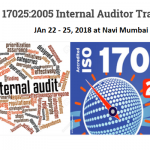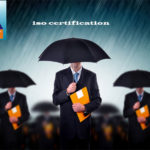ISO 14001:2004 EMS -A Summary
Just as ISO 9001 made product quality everyone’s responsibility, ISO 14001 brings the issue of environmental performance and facility efficiency out of the environmental office and makes the environment everyone’s business. ISO 14001 is a valuable business model platform, that when effectively implemented, can bring a company enormous savings through reductions in energy costs, waste disposal fees and permitting costs, just to name a few. With ISO 14001, a company can demonstrate its commitment to improving the environment while saving money.
Â
The ISO 14001 environmental business model platform was developed for forward-thinking lean companies who are interested in building efficiencies in parts of the organization that are left out of the ISO 9001 based business system. Just think what improvements could be made in the areas of equipment maintenance, waste disposal, reduction of hazardous waste streams, and the conservation of natural resources. Companies actually see that the ISO 14001 implementation costs are recouped within the first year through reductions in water and electricity use and improved waste management practices.
Â
The standard requires an organization to develop an environmental policy, identify its environmental aspects, and determine which of those aspects are considered significant. The company develops environmental objectives, targets, and a management plan for how to reach these goals. A company must have a system in place for knowing which environmental regulations apply to its operations and a system in place for periodically checking its own compliance. Furthermore, management must review the continued suitability and effectiveness of the environmental management system (EMS), internal audits must be effectively performed and corrective actions taken when necessary.
Â
Just as ISO 9001 made the business system and product quality everyone’s responsibility, ISO 14001 brings the issue of environmental performance and facility efficiency out of the environmental office and makes the environment everyone’s business. ISO 14001 is a valuable business model platform, that when effectively implemented, can bring a company enormous savings through reductions in energy costs, waste disposal fees and permitting costs, just to name a few. With ISO 14001, a company can demonstrate its commitment to improving the environment while saving money. An ISO 14001 environmental business model platform was developed for forward-thinking lean companies who are interested in building efficiencies in parts of the corporation that are left out of the ISO 9001 based business system. Just think what improvements could be made at your company in the areas of equipment maintenance, waste disposal, reduction of hazardous waste streams, and the conservation of natural resources. Most companies actually see that the 14001 certification costs are recouped within the first year through reductions in water and electricity use and improved waste management practices.
Â
A typical company that already has an ISO 9001 based management system can achieve ISO 14001 compliance/certification within 3-6 months with Lakshy Management Consultant’s support. The actual amount of time will of course depend on several variables. Several things that will have an effect on the length of time required are: the human resources available to work on the project (in addition to their normal activities), whether Lakshy Management Consultant is brought in to guide the project, and whether Top Management has been able to muster sincere support for the initiative. Like with ISO 9001, it is important to obtain clear direction and support from Top Management prior to committing to an implementation project. The implementation of ISO 14001 involves many different disciplines and it is important to get “buy in†for the program to be successful.
Â
Another important factor in the time required to achieve ISO 14001 compliance or certification is how complex the environmental aspects of a business are. If a company has a large number of environmental aspects such as the use of toxic chemicals, the generation of hazardous waste, and the use of large quantities of water throughout the company, it is fair to say that implementation may take longer than it would for a service company with a smaller environmental footprint.
Â
GENERAL REQUIREMENTS
Â
• Implement, document, maintain, and continually improve an ISO 14001:2004 based environmental management system.
• Define and document the scope of the environmental management system.
Â
4.2 ENVIRONMENTAL POLICY
Â
• Formulate, document, and implement an environmental policy appropriate to the environmental impacts of your organization’s activities, products, and services.
• Include in the environmental policy:
–Â Â Â Â Â Â A framework for setting environmental objectives and targets,
–Â Â Â Â Â Â A commitment to continual improvement,
–Â Â Â Â Â Â A commitment to prevention of pollution, and
–Â Â Â Â Â Â A commitment to comply with environmental laws and regulations.
• Communicate environmental policy to all employees.
• Make the environmental policy available to the public.
Â
4.3 PLANNING
Â
4.3.1 Environmental aspects
Â
• Document and implement a process to:
–       Identify and document environmental aspects of your organization’s activities, products,             and services,
–       Select and document significant environmental aspects using a defined and objective               methodology for evaluating importance of environmental impacts, and
–      Update environmental aspects when changes are made to your organization’s activities, products, and services.
• Select those environmental aspects that can be controlled, or over which your organization can be expected to have influence.
Â
4.3.2 Legal and other requirements
Â
• Document and implement a process to:
–Â Â Â Â Â Â Identify and have access to any applicable legislative, regulatory and other requirements, and
      –     Link these requirements to specific environmental aspects.
Â
4.3.3 Objectives, targets and programs
Â
• Establish and maintain documented and measurable environmental objectives and targets at all relevant functions within your organization.
• Establish and maintain documented and measurable environmental objectives and targets for all significant environmental aspects.
• When setting environmental objectives and targets ensure that:
–Â Â Â Â Â Â All applicable legislative, regulatory and other requirements are considered,
–      Views of persons or groups concerned with or affected by your organization’s environmental performance are considered, and
–Â Â Â Â Â Â The environmental policy, prevention of pollution, and continual improvement are
            considered.
• Establish, document, and maintain programs to achieve each environmental objective and target.
• Within each program:
–Â Â Â Â Â Â Assign responsibility for achieving environmental objectives and targets at each relevant
            function and level of the organization,
–Â Â Â Â Â Â Specify the means and method by with which to achieve environmental objectives and targets, and
–Â Â Â Â Â Â Define the time frame for achieving environmental objectives and targets.
• Review and update programs to account for new developments and new or modified activities,
products or services.
Â
4.4 IMPLEMENTATION AND OPERATION
Â
4.4.1 Resources, roles, responsibility and authority
Â
• Provide adequate resources to implement, maintain, and continually improve the environmental management system.
• Define, document and communicate authorities, roles, and responsibilities for operating the
environmental management system.
• Appoint a management representative responsible for:
–Â Â Â Â Â Â Ensuring conformance with ISO 14001:2004,
–Â Â Â Â Â Â Reporting on the performance of the environmental management system, and
      –    Making recommendations for its improvement.
Â
4.4.2 Competence, training and awareness
Â
• Qualify personnel that can potentially cause a significant environmental impact on the basis of
appropriate education, training, and/or experience.
–Â Â Â Â Â Â Keep records of education, training, and experience.
• Identify training needs associated with environmental aspects.
–Â Â Â Â Â Â Provide appropriate training and keep training records.
• Document and implement a process to make all employees aware of:
–Â Â Â Â Â Â Environmental policy, procedures/processes, and environmental management system requirements,
–      Environmental aspects and actual or potential impacts of each individual’s work,
–Â Â Â Â Â Â Environmental management system roles and responsibilities, and
      –    Consequences of departing from procedures/processes.
Â
4.4.3 Communication
Â
• Document and implement a process for internal communication regarding environmental issues.
• Document and implement a process for receiving, documenting and responding to communication from external interested parties.
• Decide whether to communicate regarding significant aspects outside of the organization.
–Â Â Â Â Â Â Document decision.
      –    If yes, define how.
Â
4.4.4 Documentation
Â
• Describe the environmental management system with:
–Â Â Â Â Â Â Environmental policy,
–Â Â Â Â Â Â Environmental objectives and targets,
–Â Â Â Â Â Â Â Scope of the system,
–Â Â Â Â Â Â Main components of the system and how they interact
–Â Â Â Â Â Â Â Documents and records required by ISO 14001:2004, and
–Â Â Â Â Â Â Â Documents and records deemed necessary by the organization to implement and maintain the system.
Â
4.4.5 Control of documents
• Document and implement a process to
–Â Â Â Â Â Â Review and approve documents prior to use,
–Â Â Â Â Â Â Review and approve changes or revisions prior to use,
–Â Â Â Â Â Â Â Identify changes and revision status,
–Â Â Â Â Â Â Â Make the latest revisions accessible at the points of use,
–Â Â Â Â Â Â Â Identify documents and keep them legible,
–Â Â Â Â Â Â Â Identify important external documents and control their internal distribution, and
–Â Â Â Â Â Â Â Remove obsolete documents from points of use and identify historical copies of obsolete documents to prevent unintended use.
Â
4.4.6 Operational control
Â
• Identify processes and activities associated with significant environmental aspects.
• Plan, document, and implement processes to control activities associated with significant environmental aspects.
–Â Â Â Â Â Â Define operational criteria and instructions to ensure conformance with the environmental policy, objectives, and targets.
–Â Â Â Â Â Â Communicate environmental processes, operating criteria, and requirements to suppliers of products and services associated with significant environmental aspects.
Â
4.4.7 Emergency preparedness and response
Â
• Document and implement a process to:
–Â Â Â Â Â Â Identify potential emergencies and accidents that can cause an environmental impact,
–Â Â Â Â Â Â Develop and document emergency preparedness and response plans/instructions for each potential emergency or accident
–Â Â Â Â Â Â Test emergency preparedness and response plans/instructions periodically (where possible and practical), and
–Â Â Â Â Â Â Â Review and revise emergency preparedness and response plans/instructions, as needed, especially after a test or actual emergency.
Â
4.5 CHECKING
4.5.1 Monitoring and measurement
Â
• Document and implement a process to monitor and measure key characteristics of processes and activities that are associated with significant environmental aspects.
–Â Â Â Â Â Â Document (keep records of) monitoring and measuring activities.
• Calibrate or verify monitoring and measuring equipment, and maintain calibration/verification records.
• Maintain monitoring and measuring equipment, and maintain maintenance records.
Â
4.5.2 Evaluation of compliance
Â
• Document and implement a process to periodically evaluate compliance with applicable environmental laws and regulations and with other requirements to which the organization subscribes
– Keep records of the periodic compliance evaluation.
Â
4.5.3 Nonconformance, corrective action and preventive action
Â
• Document and implement a process to:
–Â Â Â Â Â Â Identify and investigate actual and potential nonconformances and when appropriate take action to mitigate environmental impacts.
–Â Â Â Â Â Â Â Initiate and implement corrective actions to prevent recurrence of nonconformances.
–Â Â Â Â Â Â Â Initiate and implement preventive actions to prevent occurrence of potential nonconformances.
–Â Â Â Â Â Â Â Keep records of corrective and preventive actions.
–Â Â Â Â Â Â Â Review effectiveness of corrective and preventive actions.
–Â Â Â Â Â Â Change environmental management system documents when necessary.
Â
4.5.4 Control of records
Â
• Maintain records necessary to demonstrate conformance with the organization’s environmental
management system requirements.
• Maintain records necessary to demonstrate conformance with ISO 14001:2004 requirements.
• Document and implement a process to identify, store, protect, retrieve, retain, and dispose of
records.
• Keep records legible, identifiable, and traceable.
Â
4.5.5 Internal audit
Â
• Document and implement a process to internally audit the environmental management system
at planned intervals.
–Â Â Â Â Â Â Â Ensure objectivity and impartiality of the internal auditors.
–Â Â Â Â Â Â Â Define responsibilities and requirements for:
–Â Â Â Â Â Â Planning and conducting the audits,
–Â Â Â Â Â Â Â Reporting audit results, and
–Â Â Â Â Â Â Â Retaining associated records.
–       Consider environmental importance of the organization’s processes and activities and the results of previous audits when planning internal audits.
–Â Â Â Â Â Â Â Assess compliance with ISO 14001:2004.
–Â Â Â Â Â Â Â Assess effectiveness of the environmental management system implementation and maintenance.
–Â Â Â Â Â Â Â Report results of internal audits to management.
Â
4.6 MANAGEMENT REVIEW
Â
• Periodically conduct management reviews of the environmental management system to ensure its continuing suitability, adequacy, and effectiveness.
–Â Â Â Â Â Â Assess opportunities for improvement.
–Â Â Â Â Â Â Â Assess the need to change the environmental management system, including:
–Â Â Â Â Â Â Â Changes to the environmental policy,
–Â Â Â Â Â Â Â Changes to environmental objectives, and
–Â Â Â Â Â Â Â Changes to environmental targets and programs/
–Â Â Â Â Â Â Â Minimum management review inputs:
–Â Â Â Â Â Â Â Internal audit results,
–Â Â Â Â Â Â Â Evaluation of compliance with legal and other requirements,
–Â Â Â Â Â Â Â Communication from external parties, including complaints,
–Â Â Â Â Â Â Â Environmental performance,
–Â Â Â Â Â Â Â Status of objectives, targets, and programs,
–Â Â Â Â Â Â Â Status of corrective and preventive actions,
–Â Â Â Â Â Â Â Follow-up to action items from previous management reviews,
–Â Â Â Â Â Â Â Planed changes that could affect environmental aspects,
–Â Â Â Â Â Â Â Changes to legal and other requirements, and
–Â Â Â Â Â Â Â Recommendations for improvement.
–Â Â Â Â Â Â Â Document any decisions and actions (outputs) regarding changes and improvements to the environmental management system.
–Â Â Â Â Â Â Keep records of the management review and its results.Â
If you would like to learn more, contact us at info@lakshy.com or visit www.lakshy.com or call our 24 hours customer care +91 9821780035 to get your organization ISO 14001:2004 certified.








